Kit Palmer | May 3, 2016
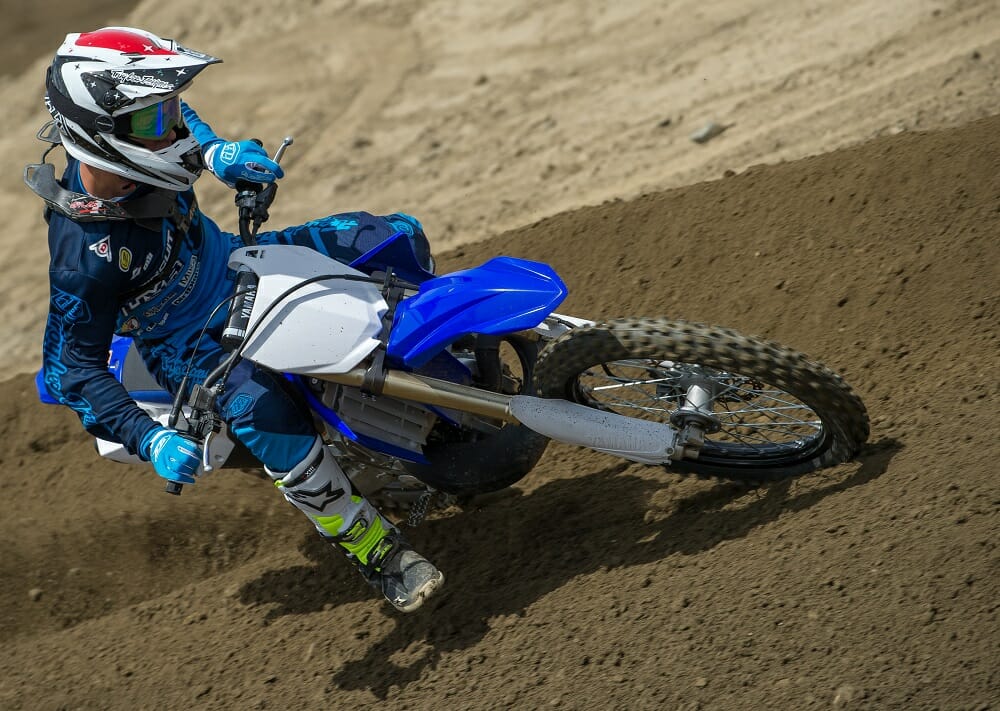 The YZ250 two-stroke might be old-school in design but it never gets old riding it.
The YZ250 two-stroke might be old-school in design but it never gets old riding it.
Photography by Kit Palmer
Motocross used to be so simple. Okay, maybe saving up your hard-earned dollars to buy a motocross bike didn’t used to be so simple but keeping and maintaining it certainly was, at least it was for me in my much younger days when all competitive motocross bikes on the market were two-strokes. You could race ’em every weekend, sometimes twice a week like I did, and do all of your own maintenance, like I did. I’d race my bike, bring it home, wash it, clean the air filter, adjust the chain, tighten the spokes and repeat, weekend after weekend. And when it came time to freshen up the top-end, no sweat! A couple of hundred bucks, a few basic tools and a few hours in the garage with the stereo belting out Led Zeppelin were all it took to have a fresh bike again. For me, it was a fun way of spending the night, and I actually looked forward to it. Life was good…no, it was awesome!
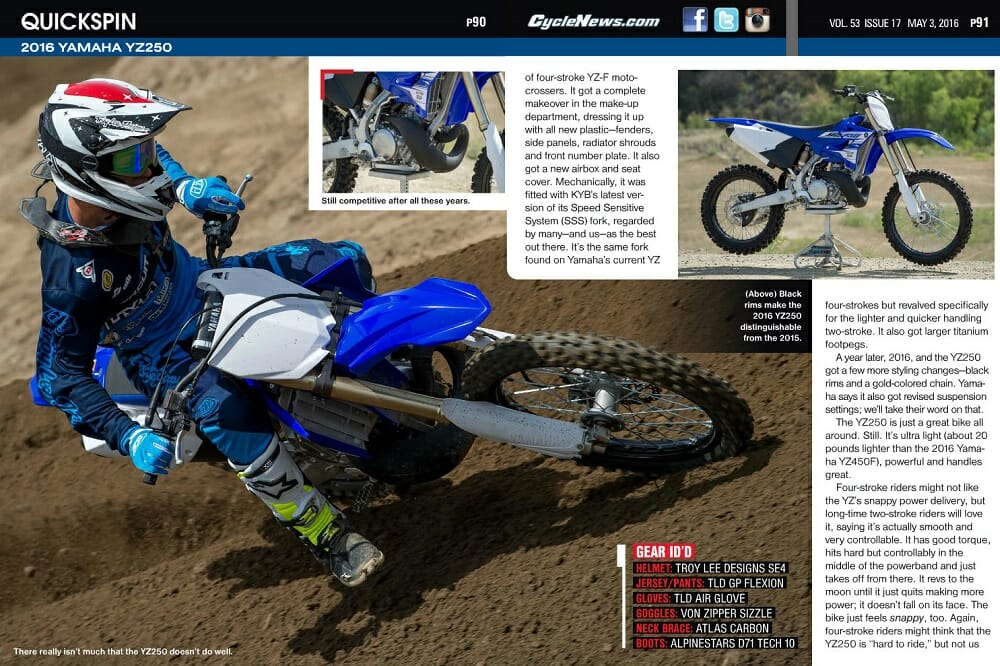 You can read the original magazine story by clicking HERE.
You can read the original magazine story by clicking HERE.
It still is, really. Four-strokes are just as awesome, they’re just different and a lot more mechanically complicated, but I’m still a big two-stroke fan, and a big fan of the Yamaha YZ250, one of the few remaining 250cc two-stroke motocrossers that is still being offered in the U.S. (KTM’s 250SX and Husqvarna’s TC250 are the other two.) Just because two-strokes are simple to work on isn’t the only reason why I like them so much, though, they’re also extremely fun to ride—when it gets down to it, really, that’s the real reason.
The YZ250 hasn’t changed much since the early 2000s. It’s basically the same bike but it has seen some worthy updates in the last 15 years, probably the most notable when it got an aluminum frame in 2005. Ten years later, it got another decent update. Yamaha gave it more modern styling, bringing it up to date with Yamaha’s current line of four-stroke YZ-F motocrossers. It got a complete makeover in the make-up department, dressing it up with all new plastic—fenders, side panels, radiator shrouds and front number plate. It also got a new airbox and seat cover. Mechanically, it was fitted with KYB’s latest version of its Speed Sensitive System (SSS) fork, regarded by many—and us—as the best out there. It’s the same fork found on Yamaha’s current YZ four-strokes but revalved specifically for the lighter and quicker handling two-stroke. It also got larger titanium footpegs.
A year later, 2016, and the YZ250 got a few more styling changes—black rims and a gold-colored chain. Yamaha says it also got revised suspension settings; we’ll take their word on that.
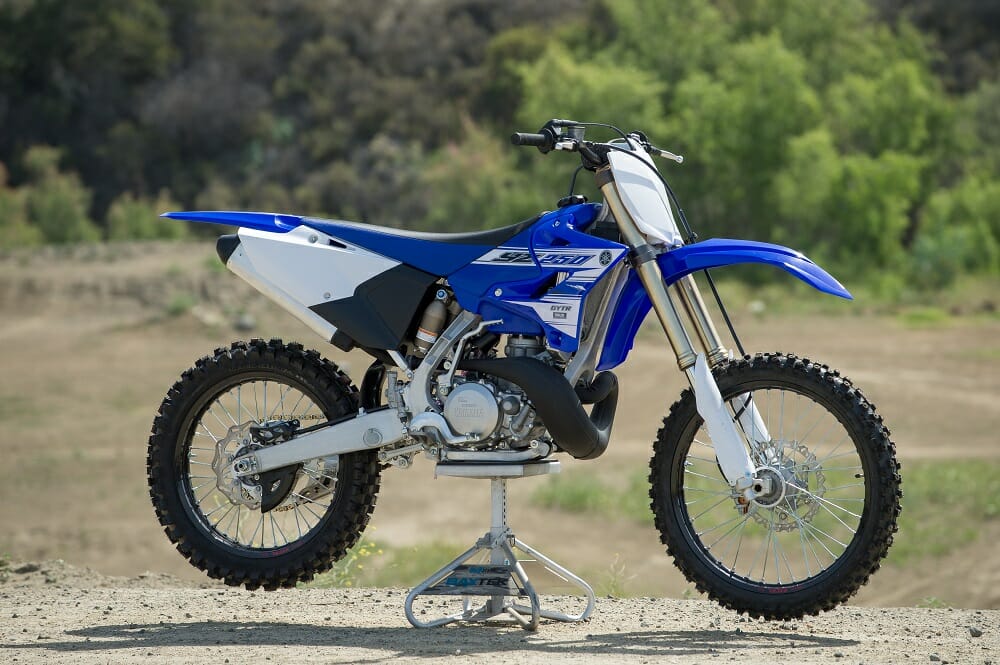 Black rims make the 2016 YZ250 distinguishable from the 2015.
Black rims make the 2016 YZ250 distinguishable from the 2015.
The YZ250 is just a great bike all around. Still. It’s ultra light (about 20 pounds lighter than the 2016 Yamaha YZ450F), powerful and handles great.
Four-stroke riders might not like the YZ’s snappy power delivery, but long-time two-stroke riders will love it, saying it’s actually smooth and very controllable. It has good torque, hits hard but controllably in the middle of the powerband and just takes off from there. It revs to the moon until it just quits making more power; it doesn’t fall on its face. The bike just feels snappy, too. Again, four-stroke riders might think that the YZ250 is “hard to ride,” but not us two-stroke aficionados.
Shifting the YZ’s five-speed transmission is a snap, and the clutch is tough and has excellent feel. Pull is light, which is a good thing, because you do slip the clutch on the YZ, but that’s nothing against the YZ, it’s just how you ride a two-stroke.
Even though the YZ uses “old-school” carburetion—in this case a Keihin PWK38S carburetor—throttle response is excellent. After all these years, Yamaha has the YZ’s jetting down pat, running a 40:1 fuel/oil mixture with Yamalube R synthetic two-stroke oil and 91 octane pump gas. We never saw signs of exhaust drool. Our bike was always ridden near sea level; heading to Mammoth MX? Bring jets.
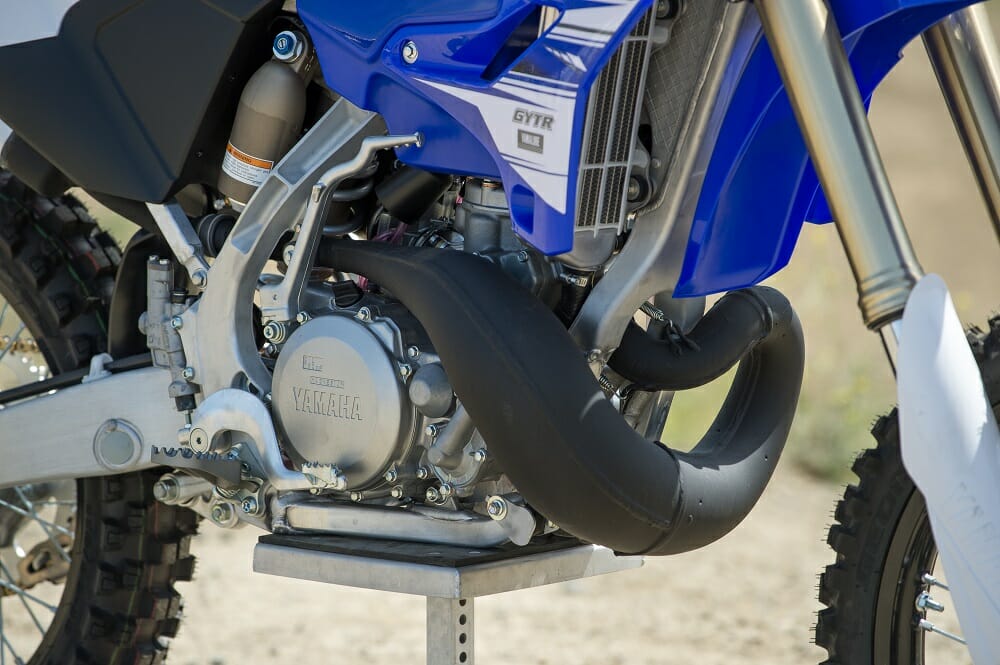 Still competitive after all these years.
Still competitive after all these years.
The YZ’s suspension is just about as good as it gets, at least right out of the crate. The SSS forks are just plain superb and the back end tracks straight. It takes something pretty nasty to upset the back end. And when you do, it usually doesn’t take much correction from the rider for it to get happy again. Both front and rear suspensions are plush, but don’t bottom easily.
Getting the YZ in and out of the turns isn’t a big deal. It turns quickly but doesn’t really like to stay in the ruts. The YZ prefers soft and sweeping berms, but overall the YZ turns well.
The YZ’s brakes are okay; they just don’t have that confidence-inspiring power that some of the bigger and more sophisticated four-strokes do. Luckily, the YZ is a lot lighter, so you really don’t need brakes that can stop a 747.

Climb aboard the YZ and it actually feels a little on the small side, especially after hopping off a YZ250F four-stroke. One of our testers thought that the distance between the top of the footpeg and the top of the seat on the two-stroke was very short, making him feel “as though I was riding a mountain bike.” Still, the YZ is comfortable in the saddle. The footpegs are wide, we like the shape of the seat and the neutral bend of the aluminum handlebars.
It truly is amazing that after all these years the YZ250 is still such a fantastic motocross bike that can still compete against bikes far more sophisticated than itself in the same displacement class. Unfortunately, it can’t compete against the rulebook that prevents this from happening, at least in the pro division. But if that’s not a big deal to you and you just want to get out there and moto, then the YZ250 is still a very viable option when it comes to choosing your next motocross bike. Plus, you can work on it yourself with nothing much more than some wrenches, screwdrivers and a stereo. CN
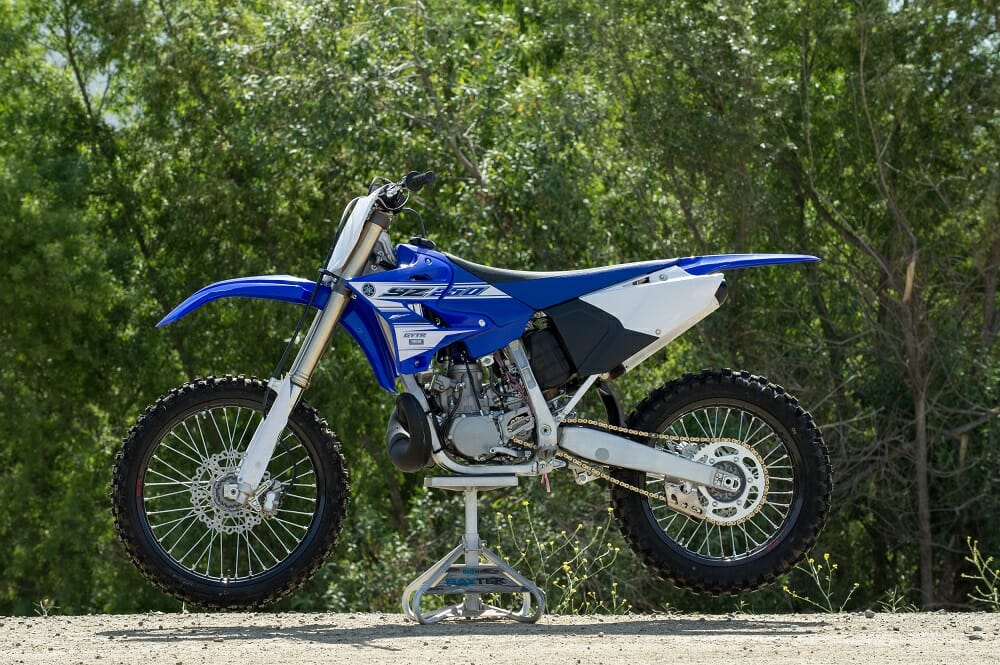
|
SPECIFICATIONS: 2016 Yamaha YZ250
|
|
MSRP:
|
$7,290
|
|
ENGINE TYPE:
|
Liquid-cooled, YPVS reed-inducted, 2-stroke
|
|
DISPLACEMENT:
|
249cc
|
|
BORE x STROKE:
|
66.4mm x 72.0mm
|
|
COMPRESSION RATIO:
|
8.9-10.6:1
|
|
FUEL DELIVERY:
|
Keihin PWK38S
|
|
IGNITION:
|
CDI
|
|
TRANSMISSION:
|
Constant-mesh, 5-speed, close-ratio, multiplate wet clutch
|
|
FINAL DRIVE:
|
Chain
|
|
FRAME:
|
Aluminum
|
|
FRONT SUSPENSION:
|
48mm KYB Speed-Sensitive System, inverted fork, fully adj.
|
|
REAR SUSPENSION:
|
KYB monoshock, fully adj.
|
|
FRONT WHEEL TRAVEL:
|
11.8 in.
|
|
REAR WHEEL TRAVEL:
|
12.4 in.
|
|
FRONT TIRE:
|
80/100-21 in. MX52 Dunlop
|
|
REAR TIRE:
|
110/90-19 in. MX52 Dunlop
|
|
FRONT BRAKE:
|
Single 250mm disc, 2-piston caliper
|
|
REAR BRAKE:
|
Single 245mm disc, 1-piston caliper
|
|
SEAT HEIGHT:
|
39.1 in.
|
|
WHEELBASE:
|
58.3 in.
|
|
RAKE:
|
26.0°
|
|
TRAIL:
|
4.3 in.
|
|
GROUND CLEARANCE:
|
14.4 in.
|
|
FUEL CAPACITY:
|
2.1 gal.
|
|
CLAIMED WEIGHT (WET):
|
227 lbs.
|
You can read the original magazine story by clicking HERE.
For more Cycle News Off-Road motorcycle reviews, click HERE.
For more Yamaha motorcycle reviews, click HERE.